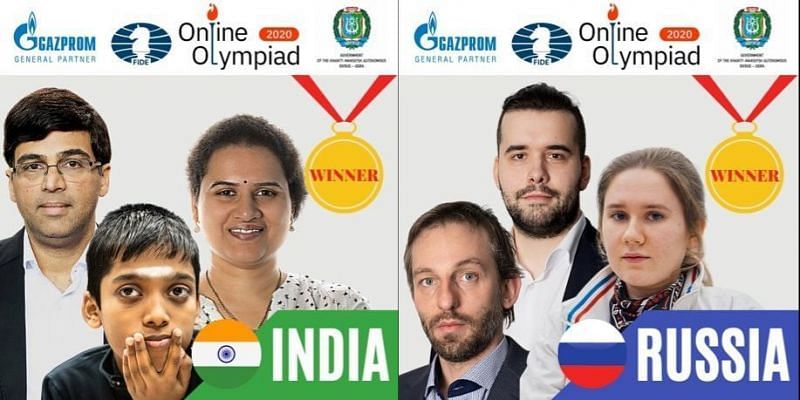
An insider's view of the Olympiad: In conversation with GM Srinath Narayanan

Grandmaster Srinath Narayanan is a wizard not only on the 64 squares but also on the analytics of team composition. He recently served as the vice-captain of the Indian team at the 1st Online Olympiad by FIDE, the world chess body.
With the likes of Viswanathan Anand, Vidit Gujrathi, and Pentala Harikrishna in the squad, along with Koneru Humpy and Dronavalli Harika, the Indian contingent looked extremely strong. However, with only six players allowed to play each match, along with one female and junior necessarily required for each of the games, there were a number of key decisions to be made.
In this conversation, we learn more about the tournament, the tactics used by the team and all the behind-the-scenes action from the Olympiad.
1. How did you get selected for the role? What were your initial thoughts?
Vidit [Gujrathi] contacted me and asked me if I could help him in this tournament. As we had an excellent rapport and a history of working well together, I just ensured that I had nothing else on those dates and agreed.
2. What was the initial strategy like for the tournament? How did the team prepare?
The initial strategy was to gain an understanding of our own team. For this, we identified and formed groups of players with whom we trained in various ways. This was good practice for them and also helped me understand them well.
3. What can you say about the composition requirements for the tournament? This kind of set-up was new and had never been seen before in an Olympiad.
I quite liked the format. It gave everyone an equal weightage. Here, we had one reserve for each player, which was quite beneficial for India, a country with impressive depth in chess. It also gave us a lot of flexibility.
4.What was it like to have Anand on the team? There were three super GMs and several juniors. How did you balance the overall team?
Anand's presence was soothing and empowering to the team as a whole. He is, without doubt, the strongest player in India. Balancing the team didn't require any particular thought. Everyone had ample space to play.
5. The initial rounds went quite smoothly except for a draw against a lower-rated team. What was your reaction to the league stage?
I was quite pleased with the league stage. If not for the unfortunate nature of the losses in the games of Humpy and Vidit, a score of 5-1 or 4.5-1.5 would have been more appropriate in that round that we drew.
6. India qualified directly to the quarter-finals by finishing on top of the podium in the league stage. What did you think about this and how did you decide on the playing field for the quarter-finals?
We were pleased to top the group at the end of the league stage. It was one of our early goals. It made our path to the finals easier as we had to play one less round.
7.The semi-finals against Poland was quite difficult. We had lost the first set and the second set was quite crucial. In the Armageddon, how did you decide the player? What all was going on in your mind during this time?
It was indeed difficult. It was a good challenge to have before the final. However, I was never really in doubt of the eventuality. Immediately after the first set, I thought that there was a high probability of the match going to the Armageddon (A special arrangement to decide the outcome of the previously drawn games/result wherein if the player with the black pieces draws, then he or she wins the game. The competitor with the white pieces has to play for a victory at all costs and gets extra time on his or her clock than the player with the black pieces), and I prepared the list of players who I felt were most appropriate for this setup.
We had already practiced these situations beforehand, so nothing specific was running on my mind. It was mostly execution of what was planned previously.
8. After this encounter, the finals seemed to be difficult as well. How was the preparation like before the game?
The preparation before the game was of usual nature. We looked at our opponents and identified the players in our team who were best suited to face them in the appropriate situations.
9. What were your overall takeaways from the tournament?
The overall takeaway from the tournament shows that we have the talent and skill-set in all the departments. From here on, it is a question of grooming this set of people by providing a favourable environment.
10. With the first gold medal achieved by India in the Olympiad’s history, what’s next?
I think we can achieve a lot between the team events in the coming decade. Our top players are young and still improving. Our generation of juniors are so promising that we are heading towards teams that are similar to the Australian cricket team of the previous decade. A squad filled with world beaters.